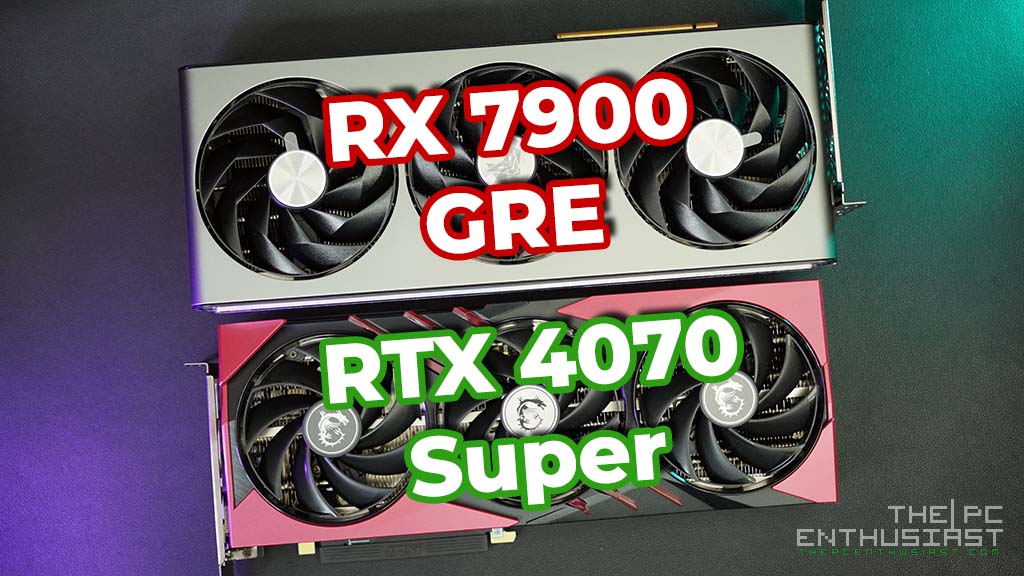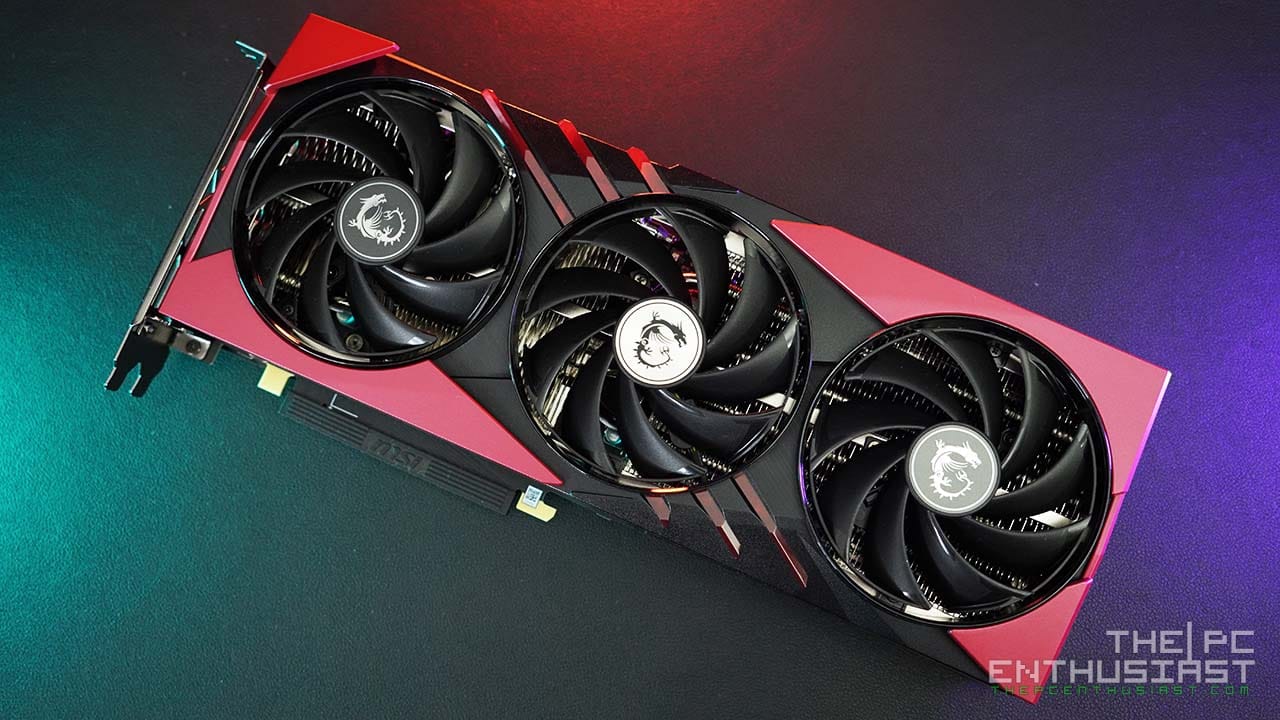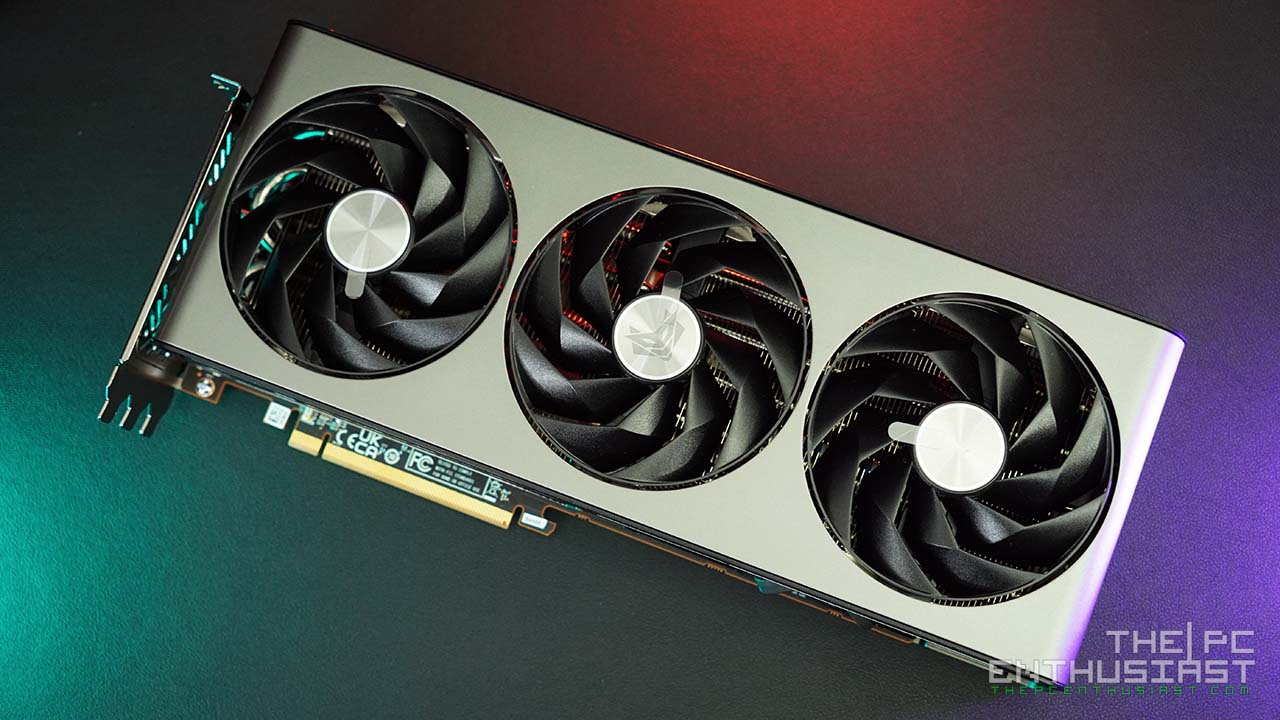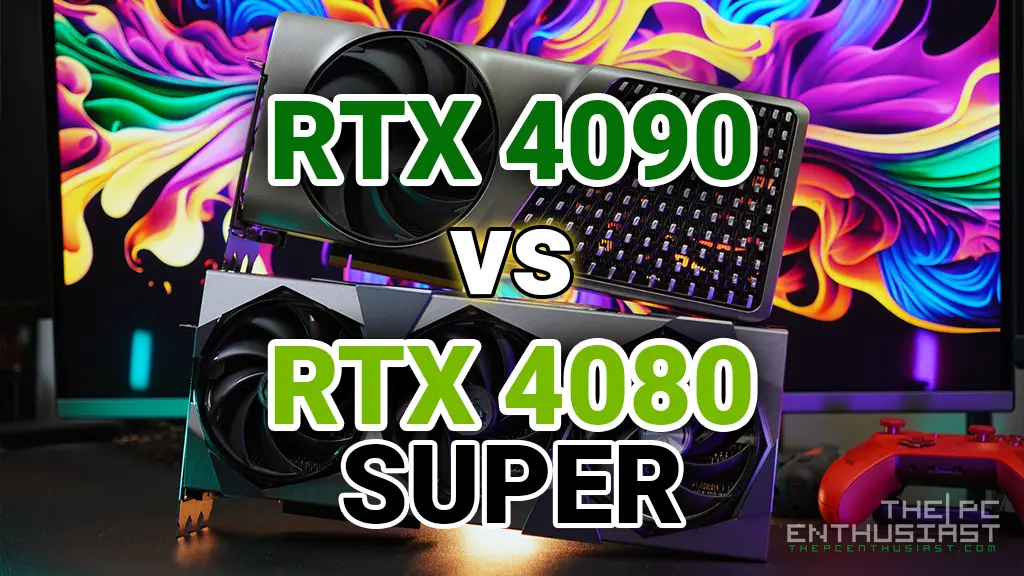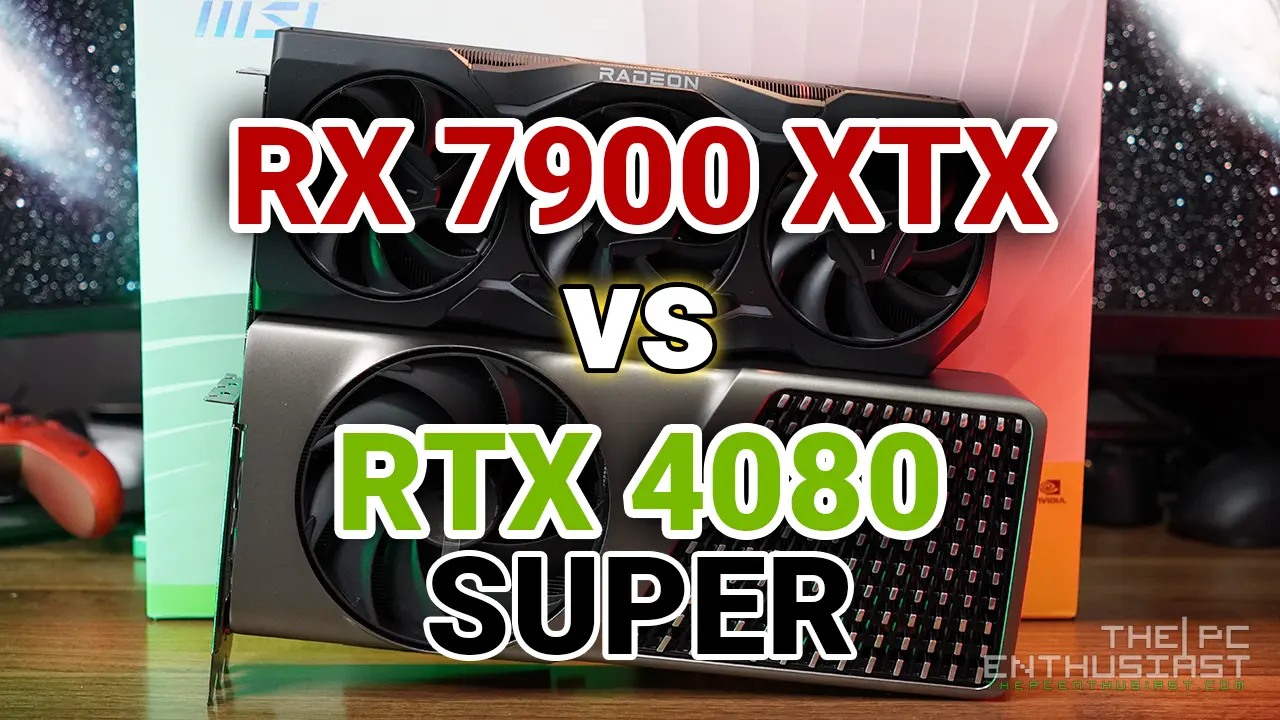The GeForce RTX 4080 SUPER is the third and the last RTX 40 SUPER series that NVIDIA released this month. A couple of weeks ago, the RTX 4070 SUPER was released, followed by the RTX 4070 Ti SUPER last week. Today, we are checking out the MSI GeForce RTX 4080 SUPER Expert graphics card. The Expert graphics card is a new model from MSI that resembles NVIDIA’s Founders Edition. In this review, take a closer look at MSI’s RTX 4080 Super Expert and find out if the RTX 4080 SUPER is “super-fast” compared to its predecessors. Please continue reading our GeForce RTX 4080 Super review below.
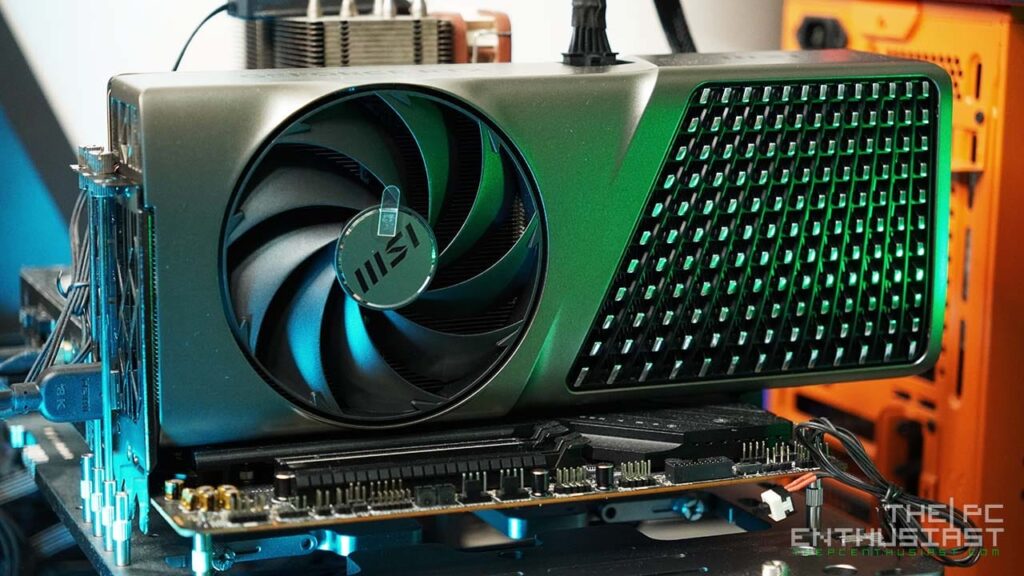
NVIDIA GeForce RTX 4080 SUPER Review, Featuring MSI’s Expert Graphics Card
By now, most PC enthusiasts and gamers are already familiar with NVIDIA’s GeForce RTX 40 Series GPUs. The RTX 40 SUPER series is just a stopgap or a bridge before NVIDIA releases its next generation of GPUs. While the RTX 4070 Super doesn’t replace the RTX 4070, the RTX 4080 SUPER will replace the non-Super variant. Basically, the RTX 4080 and RTX 4070 Ti are discontinued and will be replaced by their SUPER predecessors.
RTX 4080 SUPER: What’s New?
So, what new does the RTX 4080 SUPER offer? Similar to the RTX 4080 (non-Super), the GeForce RTX 4080 SUPER is based on the AD104 GPU but is equipped with slightly higher CUDA cores, 10,240 cores, to be exact. It provides 52 FP32 Shader-TFLOPS of power for rendering traditional rasterized graphics.
It also has 320 4th generation Tensor cores offering 836 AI TOPS with sparsity for AI processing and DLSS, 80 3rd generation Ada RT Cores capable of 121 RT-TFLOPS for powering next-generation ray-traced graphics, and 16GB of GDDR6X memory running at a data rate of 23 Gbps, and 64MB of L2 cache.
Like all GeForce RTX 40 Series GPUs, the RTX 4080 SUPER is packed with Ada innovations, including Shader Execution Reordering (SER), the new RT core engines, and DLSS 3.5, all while delivering the most efficient combination of performance and power efficiency.
It’s basically an RTX 4080 but with a slightly higher core count and a “SUPER” branding. But the most important thing about the RTX 4080 SUPER is its price.
The RTX 4080 launched with a starting MSRP of $1,299. It’s a steep price for an 80-class GPU. The RTX 4080 SUPER starts at $999, a $200 price reduction. NVIDIA aims to destroy AMD’s Radeon RX 7900 XTX, not only in terms of performance but in pricing as well.
NVIDIA Ada Lovelace architecture’s technological innovations
The NVIDIA Ada Lovelace architecture’s technological innovations include:
- New Streaming Multiprocessors (SM) – The new SM delivers up to 2x performance and power efficiency.
- 4th Generation Tensor Cores and Optical Flow – Enable and accelerate transformative AI technologies, including the new frame rate multiplying NVIDIA DLSS 3.
- 3rd Generation RT Cores – Up to 2x ray tracing performance, delivering incredibly detailed virtual worlds like never before.
- Innovative Ada Memory Subsystem – Ada delivers a significant increase to the L2 cache, delivering better performance, reduced memory bus traffic, and increased power efficiency.
- Shader Execution Reordering (SER) – SER improves ray tracing operations by up to 2x.
- DLSS 3.5 – A revolutionary breakthrough in AI-powered graphics that massively boosts performance and elevates ray tracing quality with neural rendering.
- NVIDIA Studio – Unmatched performance in 3D rendering, video editing, and live streaming.
- AV1 Encoder – The 8th generation NVIDIA Encoder (NVENC) with AV1 is 40% more efficient than H.264, enabling new possibilities for streamers, broadcasters, and video callers.
GeForce RTX 4080 Super Specifications
| Graphics Card | RTX 4090 | RTX 4080 Super | RTX 4080 | RTX 4070 Ti Super | RTX 4070 Super |
|---|---|---|---|---|---|
| Fabrication Process | TSMC 4 nm NVIDIA Custom Process | TSMC 4 nm NVIDIA Custom Process | TSMC 4N NVIDIA Custom Process | TSMC 4N NVIDIA Custom Process | TSMC 4N NVIDIA Custom Process |
| Transistor Count | 76.3 billion | 45.9 billion | 45.9 billion | 45.9 billion | 35.8 billion |
| Architecture | Ada Lovelace | Ada Lovelace | Ada Lovelace | Ada Lovelace | Ada Lovelace |
| GPU | AD102 | AD103 | AD103 | AD103 | AD104 |
| Graphics Processing Clusters | 11 | 7 | 7 | 6 | 5 |
| Texture Processing Clusters | 64 | 40 | 38 | 33 | 28 |
| Streaming Multiprocessors | 128 | 80 | 76 | 66 | 56 |
| CUDA Cores | 16384 | 10240 | 9728 | 8448 | 7168 |
| Tensor Cores | 512 (4th Gen) | 320 (4th Gen) | 304 (4th Gen) | 264 (4th Gen) | 224 (4th Gen) |
| RT Cores | 128 (3rd Gen) | 80 (3rd Gen) | 76 (3rd Gen) | 66 (3rd Gen) | 56 (3rd Gen) |
| Texture Units | 512 | 320 | 304 | 264 | 224 |
| ROPs | 176 | 112 | 112 | 96 | 80 |
| Boost Clock | 2520 MHz | 2550 MHz | 2505 MHz | 2610 MHz | 2475 MHz |
| Memory Clock | 10501 MHz | 11500 MHz | 11200 MHz | 1313 MHz | 1313 MHz |
| Memory Data Rate | 21 Gbps | 23 Gbps | 22.4 Gbps | 21 Gbps | 21 Gbps |
| L2 Cache Size | 73,728 KB | 65536 KB | 65,536 KB | 48MB | 48MB |
| Total Video Memory | 24 GB GDDR6X | 16 GB GDDR6X | 16 GB GDDR6X | 16 GB GDDR6X | 12 GB GDDR6X |
| Memory Interface | 384-bit | 256-bit | 256-bit | 256-bit | 192-bit |
| Total Memory Bandwidth | 1008 GB/s | 736 GB/s | 716.8 GB/s | 672 GB/s | 504 GB/s |
| Texture Rate | 1290.2 GigaTexels/sec | 816 Gigatexels/sec | 761.5 Gigatexels/sec | 689 Gigatexels/sec | 554.4 Gigatexels/sec |
| Connectors | 3x DisplayPort, 1x HDMI | 3x DisplayPort, 1x HDMI | 3x DisplayPort, 1x HDMI | 3 x DisplayPort 1 x HDMI | 3 x DisplayPort 1 x HDMI |
| Minimum Power Supply | 850 Watts | 750 Watts | 750 Watts | 700 Watts | 650 Watts |
| Total Graphics Power (TGP) | 450 Watts | 320 Watts | 320 Watts | 285 Watts | 220 Watts |
| PCI Express Interface | Gen 4 | Gen 4 | Gen 4 | Gen 4 | Gen 4 |
| Release Date | October 2022 | January 2024 | November 2022 | January 2024 | January 2024 |
| Launch Price | $1,599 | $999 | $1,199 | $799 | $599 |
Check the latest pricing and availability: (#ad)
MSI GeForce RTX 4080 Super Expert is available on Amazon here.
GeForce RTX 4080 Super graphics cards check at Amazon here.
MSI RTX 4080 Super Expert Packaging and Closer Look
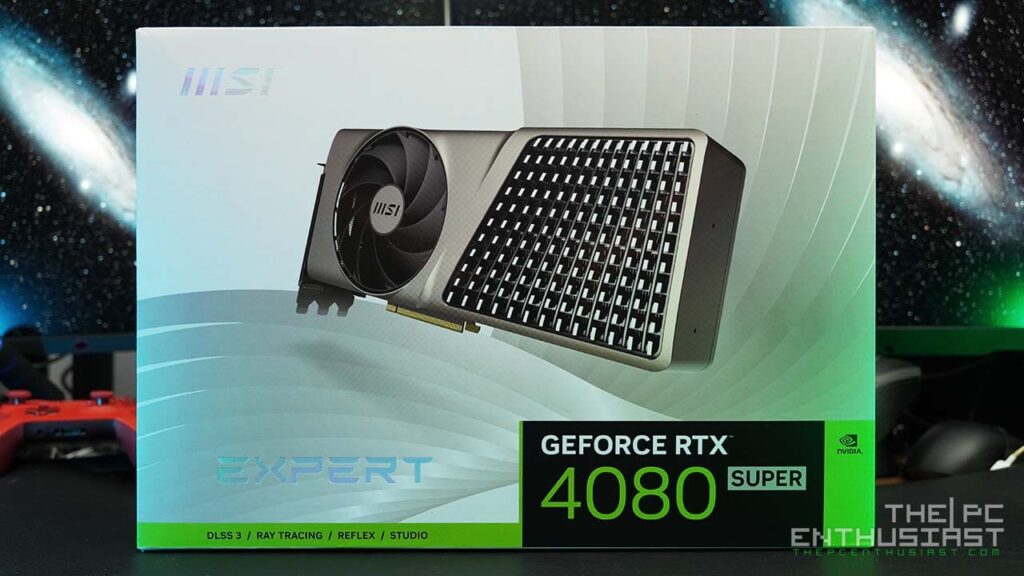

The MSI RTX 4080 Super Expert came with a white box, similar to the MSI RTX 4080 SUPRIM X‘s retail box design. A photo of the graphics card can be seen at the front. Some features are printed at the back, emphasizing its new Flow Frozr cooling solution. The box includes a 16-pin 12VHPWR adapter and a graphics card stand/holder.
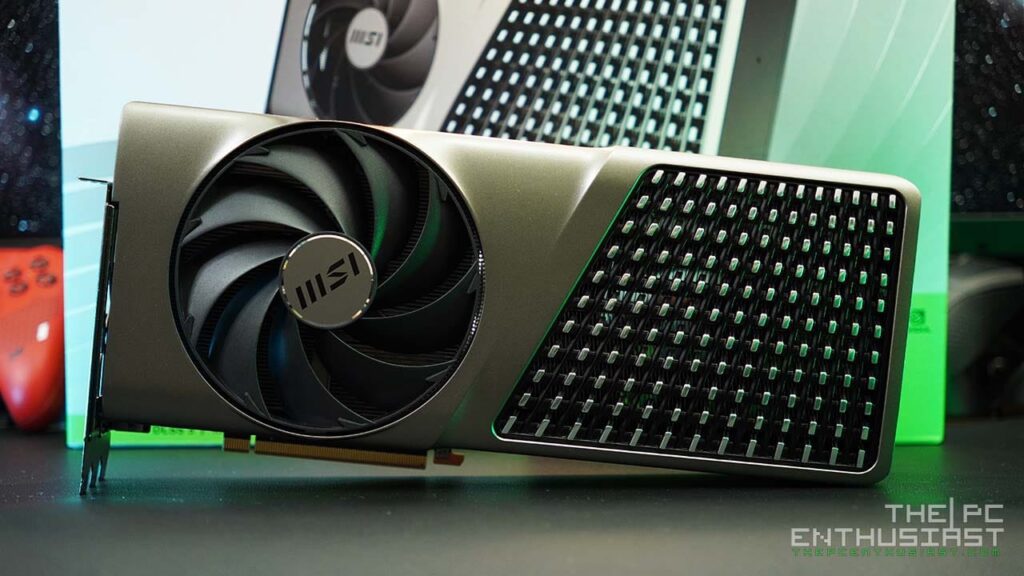

The MSI Expert design is obviously inspired by NVIDIA’s Founders Edition graphics card. It features a push-pull airflow design similar to the Founders Edition. However, the fans are noticeably larger, about 110mm or 115mm fan size. MSI calls its thermal design FLOW FROZR.
Thankfully, MSI used an aluminum die-cast shroud for the front and back portion of the graphics card. It feels smooth, clean, and premium on hand.
The Design


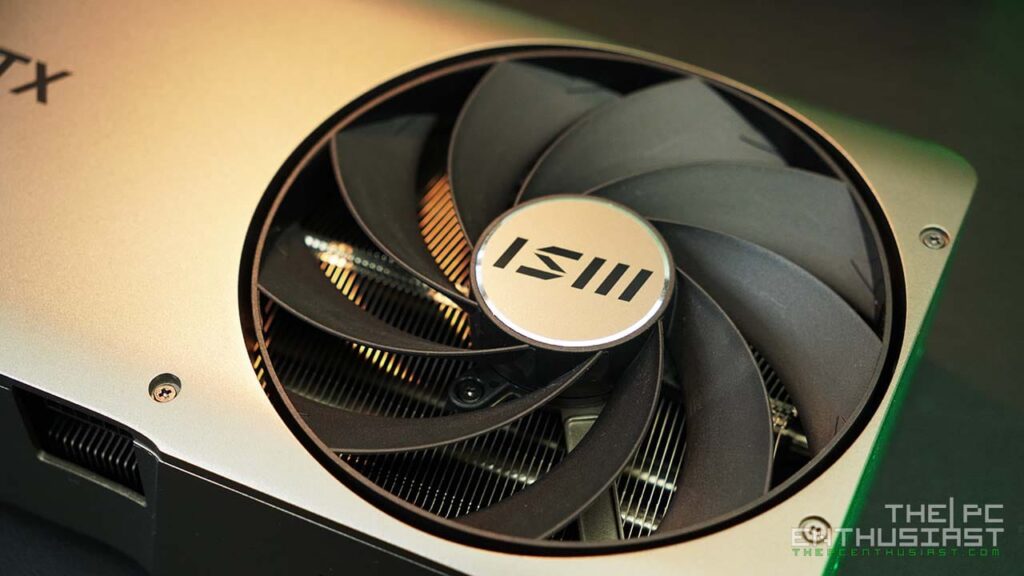
Here’s a close-up photo of the front and rear fans. Notice that the orientation of the fan blades is different. While the cooler shroud is metal, the grills on the front are made via cold forging, according to MSI. The grills remind me of NVIDIA’s Fermi graphics card.
Meanwhile, the color of the Expert card reminds me of MSI’s Radeon RX 5700 XT EVOKE graphics card. I wish MSI opted for a darker tone or perhaps a black color. But maybe NVIDIA won’t allow it.
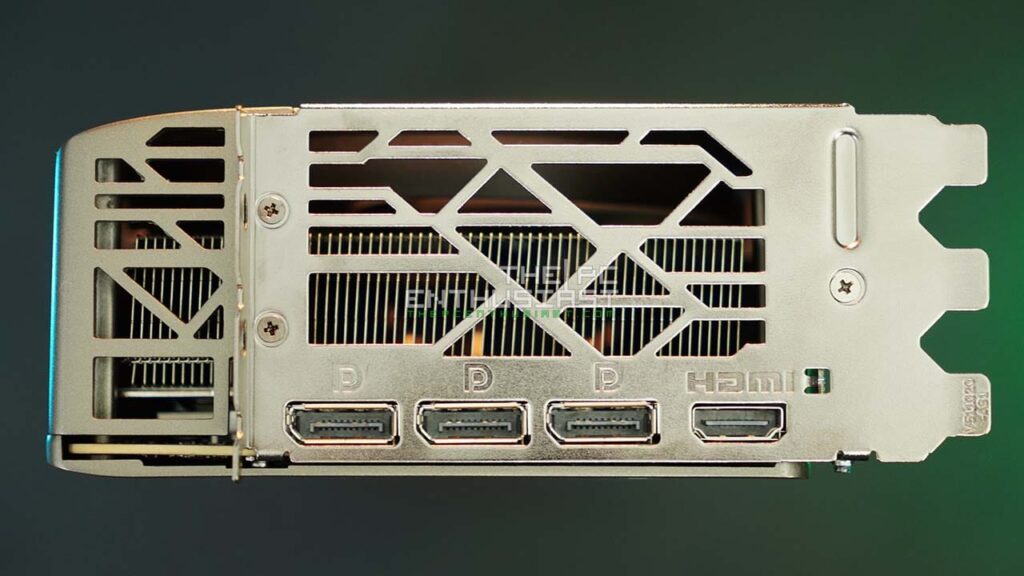

The MSI RTX 4080 Super Expert graphics card is big and chunky. It’s a triple-slot card, as seen in the photo above. Its 16-pin PCIe power connector is located near the front grills, where the PCB of the graphics card ends.
MSI had a missed opportunity here. While adding RGB lighting would ruin this graphics card’s aesthetics, I wish they had added a white LED and given the GeForce RTX and MSI logo a backlight. That would look much better, in my opinion.
Under the hood

I did not fully disassemble the graphics card, but I removed its backplate to peek at what’s under the hood. You can see the V-shaped fins and a circular cutout on the rear end of the PCB for airflow.
Some things that I’m not able to show you are the vapor chamber and core pipes used for cooling the GPU. MSI also uses double ball bearing fans and a DrMOS power station solution, but this graphics card lacks a dual BIOS option.
Overall, I like the design of MSI’s Expert graphics card. It is simple, clean, minimalist, runs silently, and cool as well. But there is room for improvement, like LED lighting on the logo, LED power indicator, and a dual BIOS option.
Now, let’s see how this graphics card performs.
GeForce RTX 4080 Super Review Test Setup

In testing the MSI RTX 4080 SUPER Expert graphics card, I use an X670E motherboard with an AMD Ryzen 7 7700X. For the memory, a DDR5-6000MHz kit was used (AMD EXPO). Resizable BAR was also enabled from the BIOS settings. Below are the rest of the specifications of the system:
| Operating System | Windows 11 Pro |
| Processor | AMD Ryzen 7 7700X |
| Motherboard | MSI MPG X670E Carbon WiFi |
| Memory | Corsair Vengeance RGB DDR5-6000MHz CL30 AMD EXPO |
| Graphics Card | MSI GeForce RTX 4080 SUPER Expert |
| OS Drive | MSI Spatium M480 Play |
| Game Drive | SanDisk Extreme PRO Portable SSD V2 and Extreme Portable SSD V2 |
| Power Supply | MSI MPG A1000G PCIE5 |
| Chassis | OpenBench BC1 V2 |
| Monitor | MSI Optix MPG321UR-QD 4K 144Hz |
I used NVIDIA driver version 551.22, and the graphics card was tested in three resolutions – 1920×1080 FHD, 2560×1440 WQHD, and 3840×2160 4K UHD.
MSI RTX 4080 Super Expert Benchmarks
Synthetic Benchmark Results
Here are the results that I got with 3D Mark’s benchmark suite. I have run these benchmarks several times, and the results have been similar and consistent.
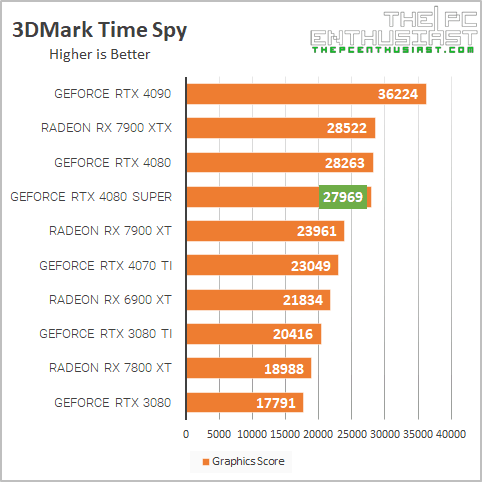
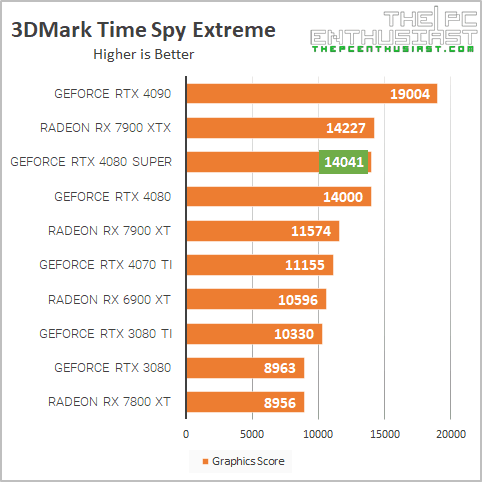
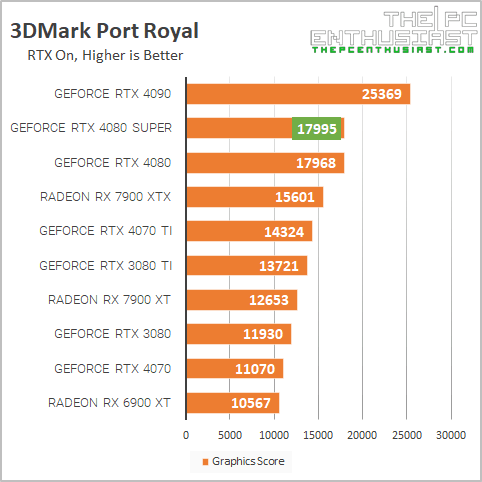
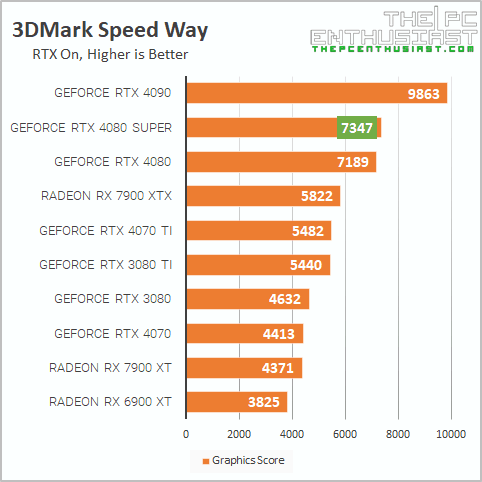



Based on 3DMark’s synthetic benchmarks, the RTX 4080 Super performs similarly to the RTX 4080. There’s no significant difference, and it looks like we are just benchmarking the same GPU from a different AIC.
This can’t be correct, right? Well, since these are just synthetic benchmarks, maybe we will see some performance difference or improvement with actual games.
1440p Game Benchmark Results
I skipped 1080p game benchmarks since the lower resolution tends to bottleneck these higher-end GPUs. In the first place, the RTX 4080 Super GPU wasn’t designed for 1080p gaming. Below are the results:

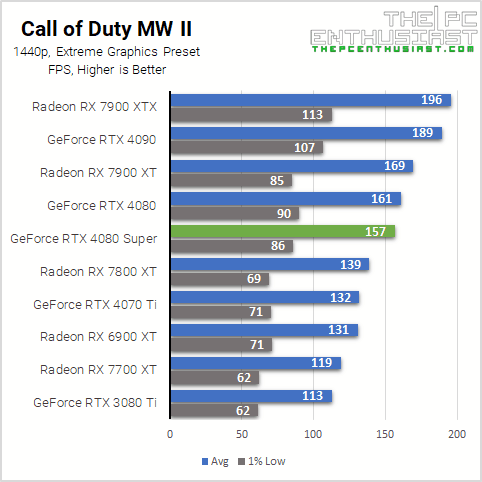
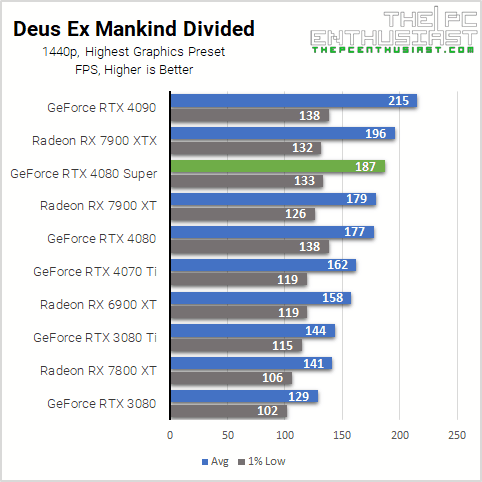

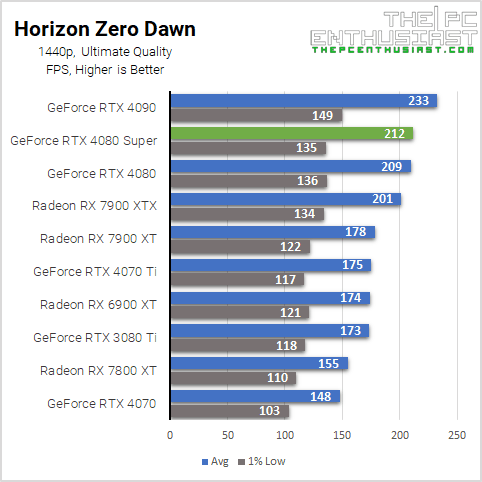


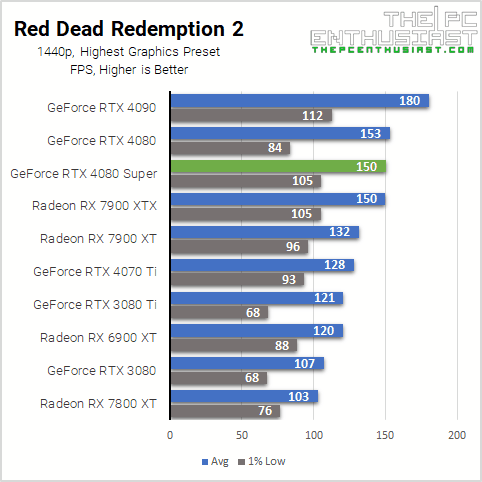
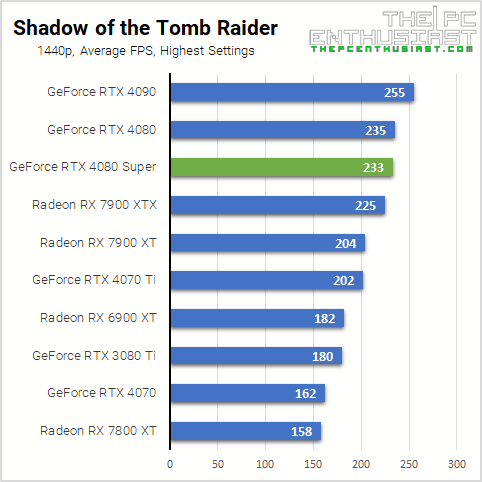


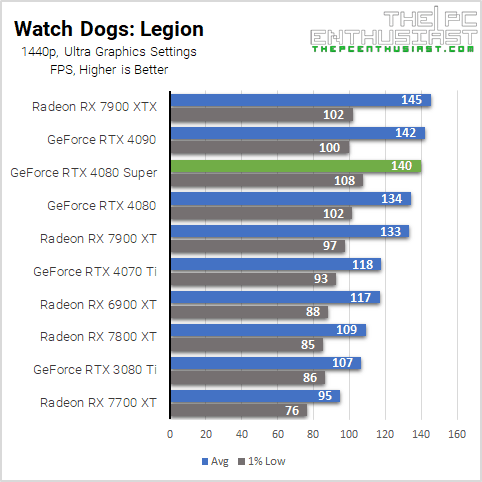
Surprisingly, the RTX 4080 Super performs similarly to its predecessor, the RTX 4080. There are some games where it’s a bit faster than the RTX 4080. But there are also games where it performs equally or slightly slower than the RTX 4080. Again, it feels like we are testing the same GPU.
Perhaps we will see a more noticeable or substantial difference at 2160p or 4K resolution. At 4K, it’s typically GPU-bound, and the GPU can really work hard to push those frames.
2160p Game Benchmark Results


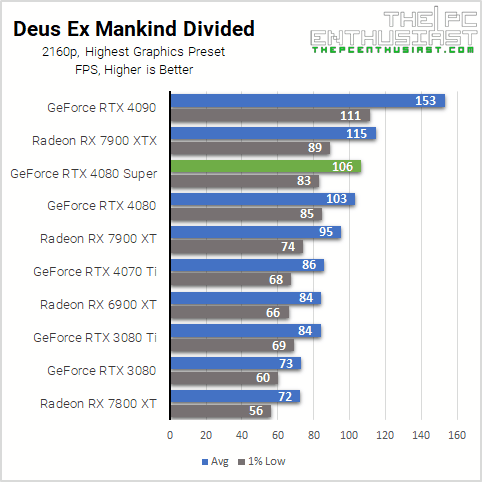

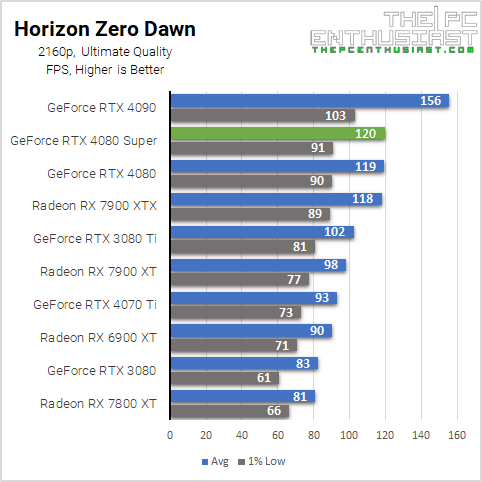
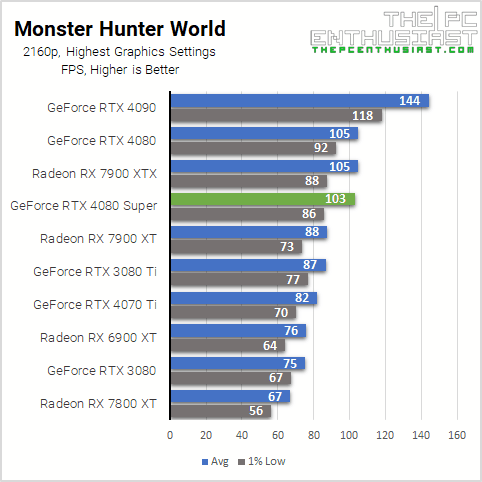
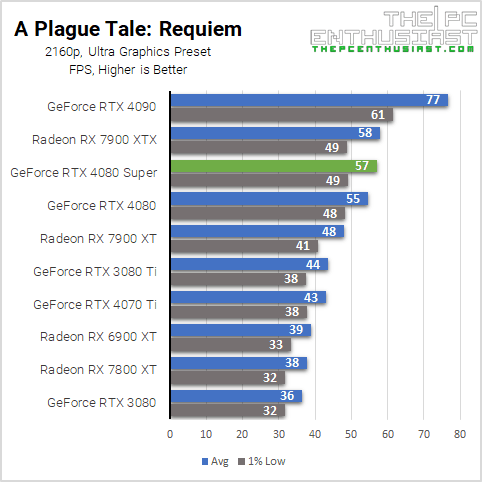
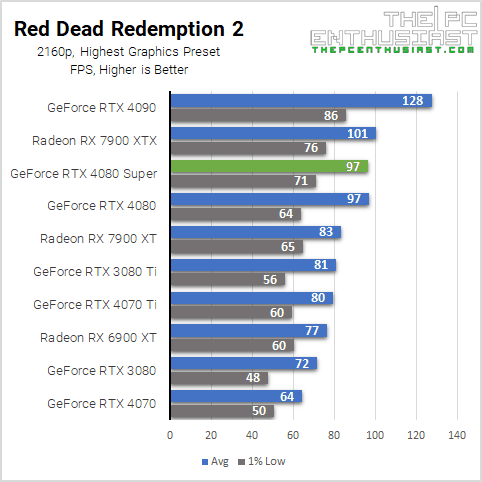
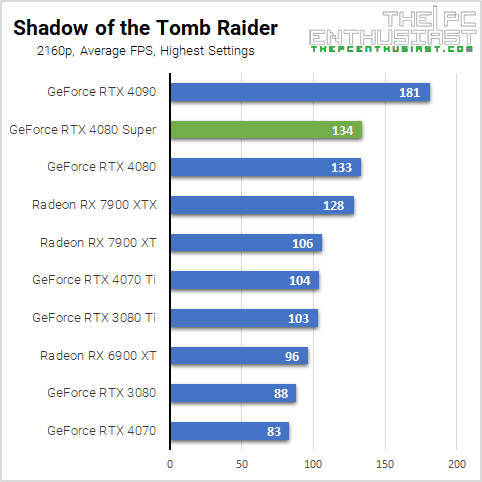
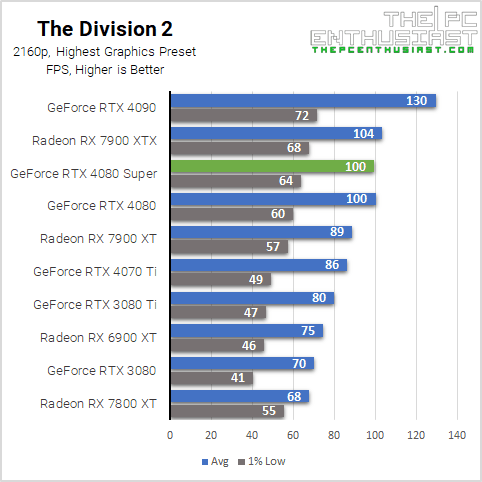
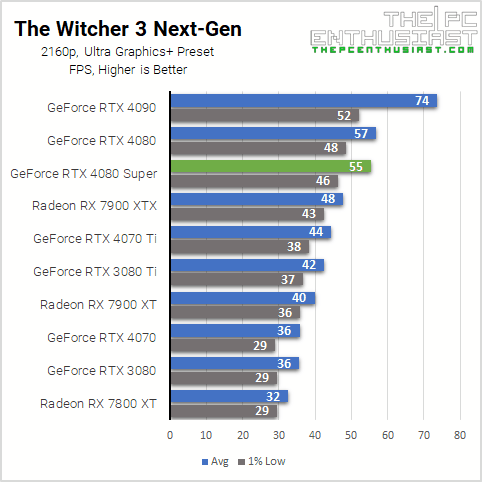

Even at 4K resolution, the RTX 4080 Super performs similarly to the RTX 4080. Despite having a slight increase in CUDA cores and boost clock speed, at the end of the day, the RTX 4080 Super performs similarly to the RTX 4080.
So, if the performance is similar, what is the actual difference between the RTX 4080 Super and RTX 4080? What’s the point of releasing the RTX 4080 Super if there’s no substantial or noticeable improvement? I’ll try to answer those questions as we conclude this review.
A Few GeForce RTX 4080 Super Ray Tracing with DLSS Benchmark Results

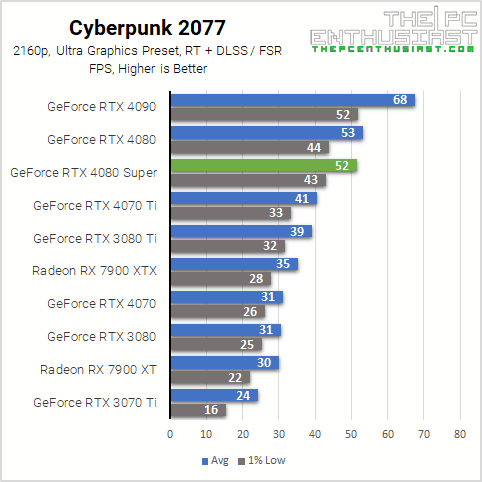
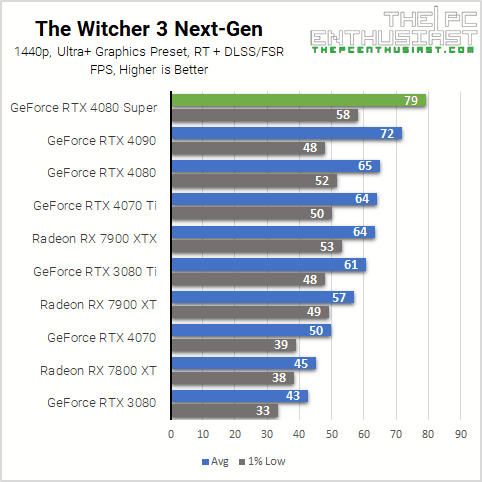

GeForce RTX 4080 SUPER Review Conclusion
Based on my results, the RTX 4080 Super is basically similar to the RTX 4080 in terms of performance. There’s no substantial difference; a 1% to 5% difference is unnoticeable at all.
With the RTX 4080 Super, NVIDIA is basically re-releasing the RTX 4080 but under the SUPER branding, and it comes at a much lower and more attractive price. Don’t let the “Super” branding fool you. The performance is nothing Super, as seen from the results above. It’s basically similar to the RTX 4080.
Why did NVIDIA release the RTX 4080 Super if they could simply mark down the price of the RTX 4080 in the first place? I’m guessing here, but this comes down to marketing. If NVIDIA didn’t release something “new”, it would kill the hype or the excitement. Marking down a GPU’s price doesn’t create as much buzz or excitement as releasing a “new” product. Besides, marking down a GPU’s price is AMD’s move. NVIDIA typically doesn’t just mark down its GPUs.
TL;DR, the RTX 4080 Super is basically similar to the outgoing RTX 4080. But what’s really new is its starting price of $999. At $999, the RTX 4080 Super offers a much better value than the RTX 4080. It’s also more attractive than AMD’s Radeon RX 7900 XTX. AMD may be forced to mark down its price. Finally, it’s also a better option than the RTX 4090, which is currently selling way above its starting price.
Regarding MSI’s GeForce RTX 4080 Super Expert Graphics Card
As for MSI’s new RTX 4080 Super Expert graphics card, I think it’s a good card overall. During my testing, its temperature is just around 63°C on average, with a peak temperature of 69°C and 55°C as its lowest. It consumes around 253W of power on average, with 308W peak consumption.
Unfortunately, the MSI RTX 4080 Super Expert is not an MSRP card. It comes with a manufacturer’s suggested retail price of $1,149. I expected a higher price tag due to its premium look and feel. But I didn’t expect that the premium would be $150 more.
Nevertheless, I like how the graphics card looks and feels, and it runs silently as well. I hope MSI will continue this design but with improvements. Perhaps change its color to black or white, add some LED backlight on the logo, or add a dual BIOS feature.
Finally
The GeForce RTX 4080 Super’s release is less exciting than the RTX 4070 Super. The RTX 4070 Super offered performance near an RTX 4070 Ti and, at the same time, kept the price of the RTX 4070.
The RTX 4070 Ti Super was released at the same price as the RTX 4070 Ti. Although it offered increased VRAM and dual NVENC encoder, its performance is just around 5% faster than the outgoing RTX 4070 Ti.
I guess the RTX 4080 Super is a bit better than the RTX 4070 Ti Super since its starting price is $200 less despite offering the same performance. I hope retailers will honor the starting price and that we will see many MSRP models on the release date.
Check the latest pricing and availability: (#ad)
MSI GeForce RTX 4080 Super Expert is available on Amazon here.
GeForce RTX 4080 Super graphics cards check at Amazon here.


